The LapDawg O-Stand is a strikingly versatile and equally odd-looking stand for a wide range of tablet/reader devices. It arrives in a somewhat imposing box, which hints at the scale of stand you’re about to encounter. Even so, you may not be prepared for the coiled mass that awaits inside. However, if you’ve struggled to prop, hold, position, and use hands-free (or just use without holding!) your tablet – and your tablet is just about anything from a 7″ Kindle Fire up to perhaps a new 11″ wide Windows RT tablet, then the O-Stand will be of interest.
Inside The Box
Inside the box you’ll find the O-Stand in two pieces, or possibly three, along with a hex wrench and a manual.
The manual suggests that the O-Stand ships with three of four legs attached, but mine had all four attached. The “head” with adjustable claws (that’s what they call them!) snaps on to the ball-joint mount, and you’re ready to go.
Gripping, Adjusting, and Twisting
The head has a quick-release on the back to allow the head to expand/contract to fit devices between 5-9″ wide (in whatever orientation you prefer) while the width of the tabs is fixed – meaning in whatever orientation you use your device, it has to be at least wide enough to span the wider set of tabs at about 5.5″
The nut below the ball joint holds the head in position, so changing the angle/orientation is accomplished by loosening the nut a bit, turning the head as desired, and then tightening it up again. To change the claw width, flip the large tab down and then pull or push the top to change the width.
The legs are surprisingly long at 21.5″. They’re made of “flexy” material and can be twisted to about a 5-6″ diameter, or spiraled into a tighter radius. There is a 4″ long flexible neck between the mounting ball where the legs attach and the head with its ball joint, allowing additional quick adjustments to the display angle of the tablet after everything is locked down.
Firm yet Gentle
I tossed the first two tablets I could find into the waiting claws of the O-Stand. First up was an iPad, which I intentionally left with its mag-hinged cover attached:
You can see the O-Stand had no problem accommodating it with the cover.
From the back, you get a feel for how well the iPad is supported and cradled, but it’s hard to show just how stable it was, even with the legs just splayed out a bit.
A detail shot of the tab – the padding material compresses and cradles the device – no chance of marring the edge, and no chance of the tablet slipping out, so long as you supply sufficient pressure when adjusting the claw width before locking it down. When done correctly you should not be able to move the tablet at all, apart from the head, so giving it a few tugs left/right should let you know you’ve got it locked in.
You can also see by the photo above that the tab widths are quite generous at an inch deep. I’m not sure I’d want a tablet that thick, but if you’ve got one it would work in the O-Stand.
Next up is my old Android tablet – wider and a bit skinner than the iPad at 6.8″ wide, and an inch longer:
It too went in without a hitch – and it used a bit more of the depth of the tabs (though nowhere near the full inch, thankfully!)
Typical Scenarios
Beyond gripping tablets well, the main use of a stand is holding your tablet in a convenient way, so you don’t have to. Here are three example scenarios: cooking, working out, and couch surfing.
In the kitchen you’ll want your tablet a couple of feet above counter height – out of the way of flying food and readable without contorting your head.
For that I used a cross-leg pattern on the legs. I was able to adjust the pitch of the tablet during use, thanks to the flexible neck. This leg arrangement is stable enough to interact with the tablet – tapping, sliding, and pinching were all possible with minimal movement thanks to the rubbery feet providing some grip on the counter top.
For working out (at home – frankly I don’t see many people hauling this beast into their local gym) the long flexible legs let you arrange the O-Stand on top of your workout gear.
In this case, it’s not the feet providing stability, rather it’s the ability to flex the legs over, around, and through various bits of the gear. You get a nice view here of using the neck to position the tablet after the base/legs are in a good arrangement. The long length of the legs lets you tweak the position so you can still get to the controls of the treadmill.
On the couch you’d think you might have some trouble, but I was able to arrange the O-Stand on an arm with ease:
This provided a stable platform and the perfect height for extended reading.
Swiping and tapping worked without budging the tablet.
I didn’t take photos of the other typical uses the O-Stand was pressed into, but it found its way into the bedroom where it sometimes straddled a reclining person and held an e-book or Netflix streaming tablet; here the long legs made it possible for the O-Stand to sit on the bed, not the person. Likewise it found itself wrapped around a side-table more than a few times, holding a tablet displaying streaming video.
Final Stand
After several weeks with the O-Stand, there hasn’t been a scenario where I’ve not been able to contort it into a position to hold a tablet for me. I certainly never worried about it dropping a tablet on me, or even tipping over. About the only thing I could complain about is that the leg length is both a blessing and a curse – sure, you can take off all but one or two legs to get a lower height, should you need it, but honestly reaching for a hex wrench to pull off legs so I could change the height certainly didn’t happen when I was using it – rather I ended up with a tangled mass of coiled legs. Messy, but effective. The versatility you gain from the longer legs outweighs this drawback for me, but perhaps an option for shorter legs might work too. Also, the size, bulk, and oddness of the thing means it’s not going with you many places. That’s not to say it doesn’t work in a lot of different settings, just that you’re not likely to toss it in your backpack and haul it around with you.
Google Review Tap Cards (3-Pack) by TapFive - Tap for Instant Reviews - All Phones Compatible - Reusable Smart Tap NFC & QR - Boost Business Reviews - Powered by TapFive (3 Card Pack)
$34.90 (as of December 17, 2025 21:04 GMT -05:00 - More infoProduct prices and availability are accurate as of the date/time indicated and are subject to change. Any price and availability information displayed on [relevant Amazon Site(s), as applicable] at the time of purchase will apply to the purchase of this product.)REVLIXI Google Review Stand -Boost Reviews w/Reusable Google Review Tap Card Stand & QR Code Stand- No App or Subscription - Android & iPhone Compatible-Boost Google Reviews for Online Growth
$24.89 (as of December 17, 2025 23:07 GMT -05:00 - More infoProduct prices and availability are accurate as of the date/time indicated and are subject to change. Any price and availability information displayed on [relevant Amazon Site(s), as applicable] at the time of purchase will apply to the purchase of this product.)Product Information
| Price: | $79.00 |
| Manufacturer: | LapDawg |
| Requirements: |
|
| Pros: |
|
| Cons: |
|

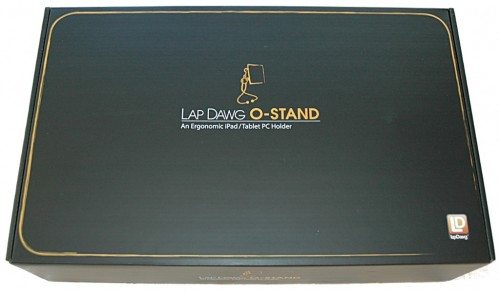

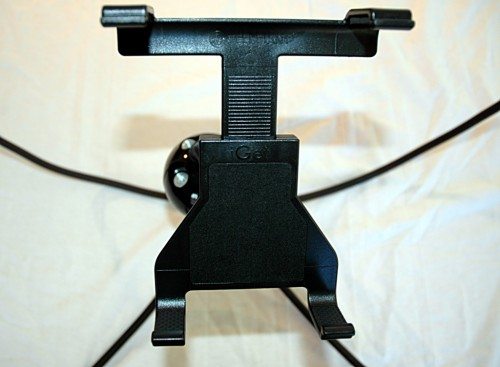
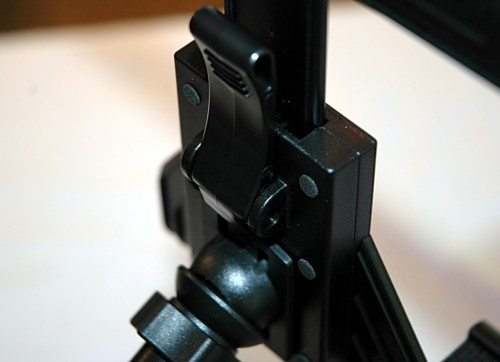
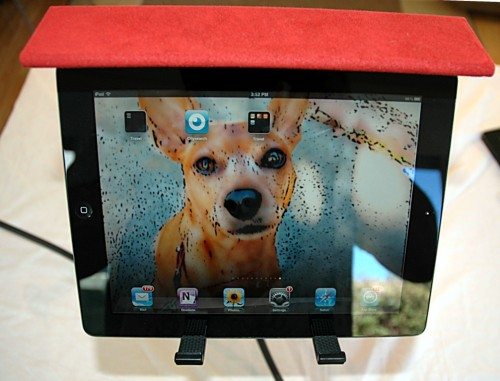
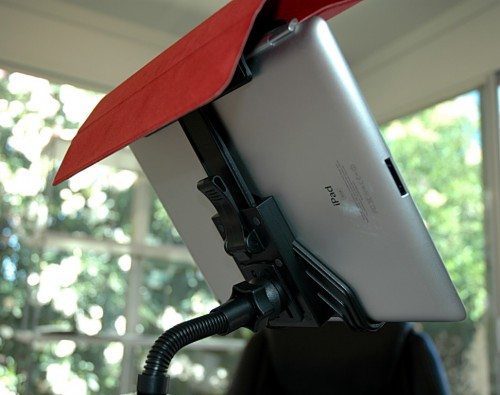
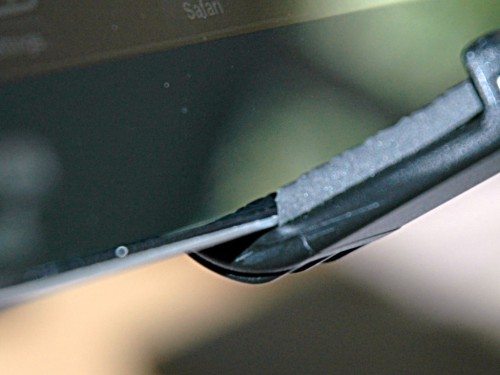
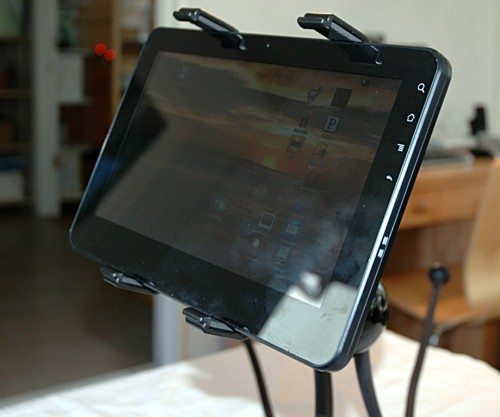
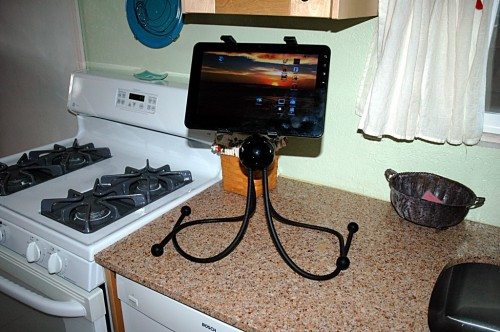
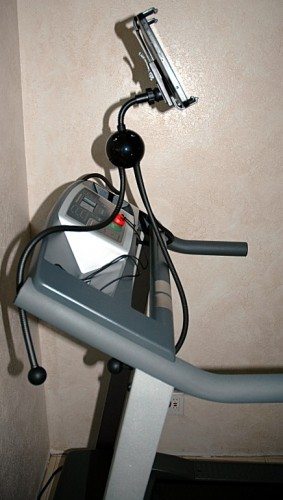
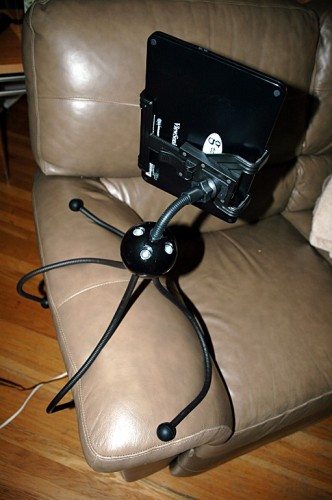
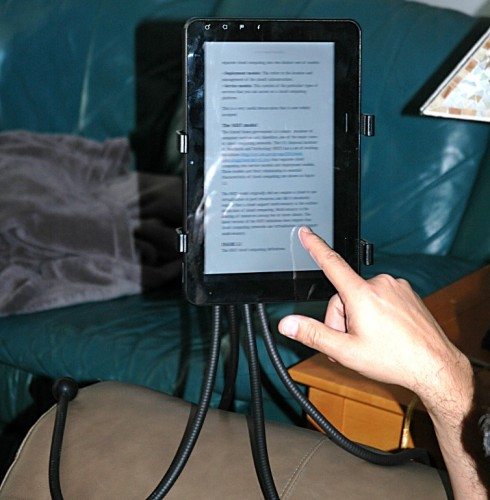


Gadgeteer Comment Policy - Please read before commenting
Pretty neat looking device!
Looks like it will come alive, grab you, and carry you off to some deep underwater cave 🙂
Price is a little steep for me, but than again that’s just me.
The head gets detached easily with or without the ipad clamped on. The head is connected to the balljoint by means of 4 hooks on the join plate and there is nothing that can hold the two parts tight. Otherwise the whole gadget works quite well in many types of configuration.
Has the “claw” snapped off of the flexy neck? Will the height of an iPad 4 (9.50 inches) exceed the maximum adjustable height of the claw? Put differently; can one position the claw vertically such that the claw ends hold the device in portrait (where the top and bottom claw ends are in contact with the top and bottom of the iPad)?
I’ve not used the stand extensively post review, I don’t know how durable it is.
The claw expands up to 5-9″ wide per the review. I don’t recall how tall the iPad is, if its more than that you’d have to grip it on the “sides” to use it in portrait mode.
If you use some black electrical tape to secure the base holder to the 4 hooks bracket . The Nook stays secure and sturdy. I thought about some glue, but afraid the slide size adjuster would not slide. Too bad they used some MIT guy for the 4 legs and ball, and a Walmart grad for the 4 hook attachment plate.